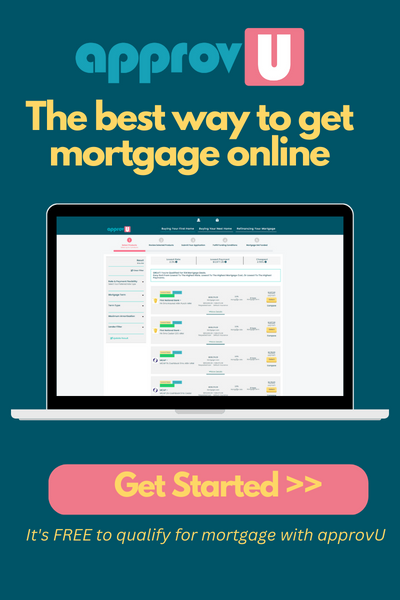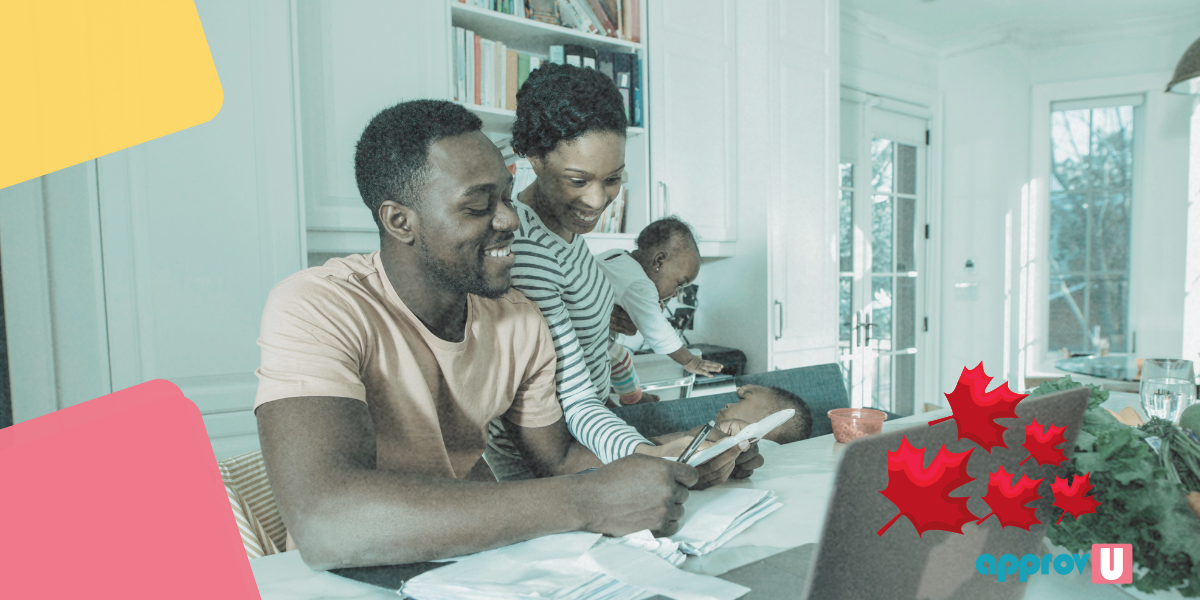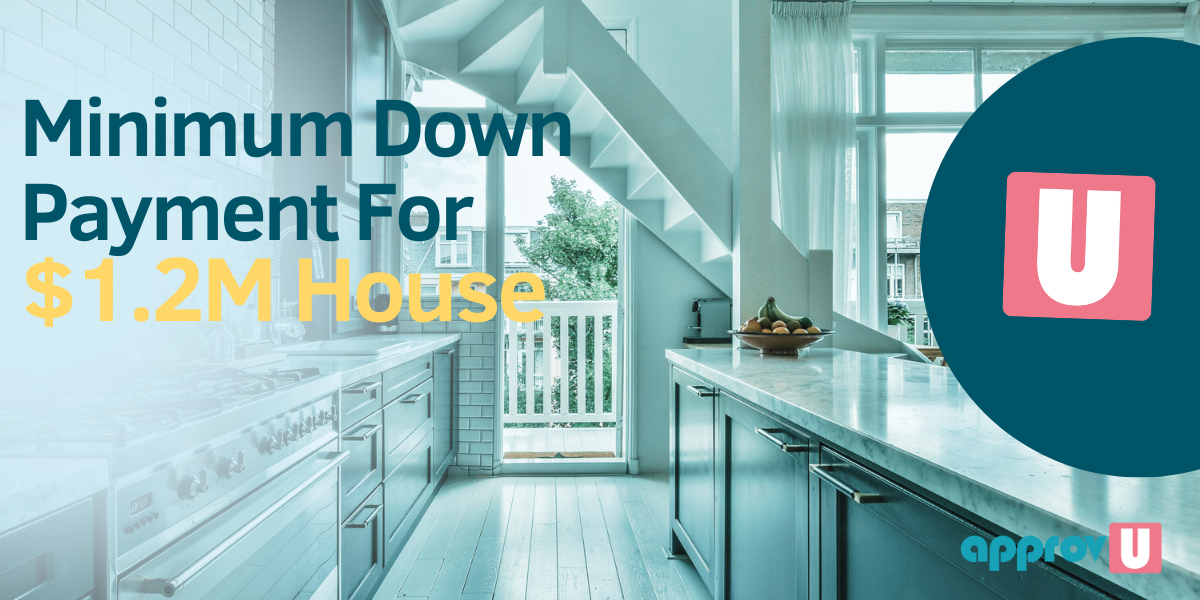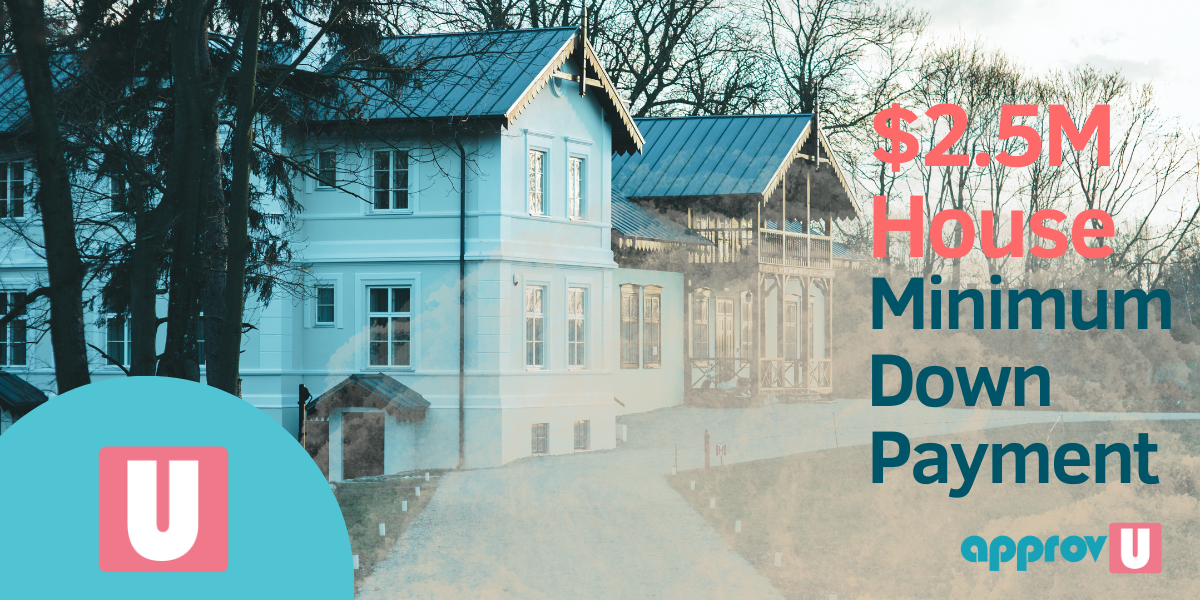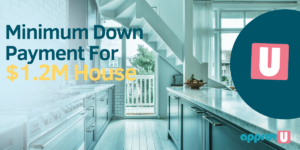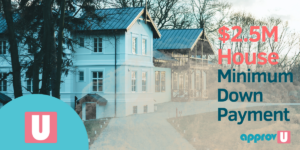Understanding the financial aspects of buying a house in Canada is essential as you explore listings and imagine your dream house.
One crucial factor to understand is the down payment – the initial amount of money you pay upfront.
This payment isn’t just any sum; it demonstrates to lenders that you’re committed and capable of handling significant financial responsibilities.
But how much down payment do you need to buy a house?
This article answers that question.
We’ll cover the minimum requirements for the down payment and money-saving financial strategies.
Understanding these details is crucial for a successful home-buying journey, whether you’re a first-time buyer or investing in another property.
Let’s explore down payments together, helping you unlock the door to your new home.
What is a Mortgage Down Payment
A mortgage down payment is the initial large payment you make when purchasing a home.
It’s a portion of the total purchase price that you pay upfront, in cash, with your mortgage loan covering the remainder.
For instance, if you buy a house for $500,000. You contribute $25,000 from your funds to borrow the remaining $475,000 to cover the full asking price.
Then, your down payment is the $25,000 you paid directly to the seller’s representative or upfront.
Think of it as your investment in the future home – a way to show lenders that you’re committed and financially stable enough to take on the responsibility of a mortgage.
Impacts of Your Mortgage Down Payment on House Purchase
The importance of a down payment extends beyond just a financial commitment to your lender.
It also affects your mortgage interest rate, the amount of your monthly mortgage payments, and whether you’ll need to purchase mortgage default insurance.
The larger your down payment, the less you’ll need to borrow, and the more favourable your loan conditions can be.
This means that by making a larger down payment, you’re reducing your debt and setting yourself up for more favourable financial conditions in the long run.
You might wonder, “Do I really have a say in how much I put down?”
The answer is yes, to a degree.
While lending institutions and government regulations set minimum requirements, you have flexibility within those boundaries to decide how much you’re comfortable paying upfront.
The right amount for you will depend on your financial situation, long-term goals, and the current real estate market conditions.
Minimum Down Payment for a House in Canada
The minimum down payment is directly tied to the home’s purchase price.
- You need a minimum of 5% for homes priced at $500,000 or less.
For a home costing $300,000, you’d need at least $15,000.
- For homes priced between $500,000 and $999,999, the minimum down payment is 5% of the first $500,000 plus 10% of any amount over $500,000.
If the home price is $750,000, your minimum down payment would be $25,000 (5% of $500,000) plus $25,000 (10% of the remaining $250,000), totalling $50,000.
- For homes priced at $1 million or more, a straightforward 20% minimum applies.
To buy a $1.5 million home, you’ll need at least $300,000 down.
This tiered system ensures homebuyers are financially committed to home purchases while protecting lenders by reducing risk.
Average Down Payment on a House by Location
Canada’s real estate market shows significant regional differences, with average down payments fluctuating greatly between provinces and cities.
The minimum down payment is higher in provinces with major urban areas, such as British Columbia, Vancouver, and Ontario, with Toronto.
These major cities are experiencing inflated house prices.
In contrast, more affordable markets often see down payments closer to the minimum as buyers capitalize on lower property values.
| Provinces | Average House Price | Minimum Down Payment |
|---|---|---|
| Canada | $685,809 | $43,580.90 |
| British Columbia | $991,440 | $74,144.00 |
| Alberta | $476,718 | $23,835.90 |
| Saskatchewan | $330,800 | $16,540.00 |
| Manitoba | $342,755 | $17,137.75 |
| Ontario | $873,207 | $62,320.70 |
| Quebec | $502,141 | $25,214.10 |
| Nova Scotia | $398,700 | $19,935.00 |
| New Brunswick | $286,700 | $14,335.00 |
| PEI | $340,900 | $17,045.00 |
| Newfoundland | $286,100 | $14,305.00 |
| Yukon | $529,196 | $27,919.60 |
| Northwest Territories | $341,124 | $17,056.20 |
- Canada-wide, the average home price in 2024 is $685,809, requiring a minimum down payment of $43,580.90 (approximately 6.35% of the purchase price).
- British Columbia is the most expensive province, with an average house price of $991,440 and a hefty minimum down payment of $74,144.
- Ontario has a notably higher average down payment ($62,320.70), likely due to the number of houses exceeding the $500,000 threshold.
- Newfoundland, New Brunswick, and Saskatchewan offer the most affordable options, with average prices under $350,000 and minimum down payments under $17,500.
Important Considerations:
- This data represents averages. Depending on location, property type, and other factors, actual prices and down payments can vary significantly within each province.
- Lenders may require a larger down payment for buyers with lower credit scores or self-employed status.
- Mortgage default insurance (e.g., CMHC) is mandatory for down payments under 20%, adding to the overall cost of buying.
How Much Down Payment You Need to Buy a House
The minimum down payment you need for a home increases with the price to ensure you invest significantly in your purchase, especially in expensive markets.
This tiered structure discourages excessive borrowing and promotes financial stability by requiring you to save diligently.
Here’s a summary of the down payment requirements based on house prices:
INSERT DOWN PAYMENT BY PRICE TABLE
Calculating Your Minimum Down Payment
When determining how much you’ll need for your down payment, consider the national baseline and the specifics of your local real estate market.
- Start by evaluating the price range of homes you’re interested in.
- Then, apply the minimum down payment percentage to get a ballpark figure.
- Remember, the minimum down payment for homes under $500,000 in Canada is 5%, but this percentage increases as home prices rise.
- Next, factor in potential variations based on location.
- If you’re considering properties in a competitive city, consider how a higher down payment could affect your buying power.
- Also, consider how your down payment fits into your broader financial picture, including emergency funds, retirement savings, and other financial goals.
Tips and Strategies for Saving for the Minimum Down Payment
Saving a hefty down payment for a high-priced house can feel daunting, but strategic planning makes it achievable.
Here are some tips to get you started on your homeownership journey:
- Automate Your Savings: Set up a separate savings account for your down payment and automate transfers every payday. This “pay yourself first” strategy ensures you consistently save without thinking about it each month.
- Cut Back on Non-Essential Expenses: Review your monthly spending and identify areas for reduction. Even small savings can add up over time, contributing significantly to your down payment fund.
- Increase Your Income: Look for ways to increase your income. This could be through overtime, a side job, or even selling items you no longer need. Every extra dollar can be directed towards your down payment savings.
- Use Windfalls Wisely: Any unexpected windfalls, such as tax refunds, bonuses, or gifts, should be funnelled directly into your down payment savings. While it might be tempting to spend this money, remember your long-term goal of homeownership.
- Down Payment Assistance Programs: Explore down payment assistance programs available in your province or territory. Some programs offer grants or interest-free loans to first-time homebuyers, which can significantly boost your down payment savings.
Other Down Payment Contents
FAQs: Answering Down Payment Questions & Misconceptions
Can I Buy a House With Less Than 20% Down?
Yes, you certainly can.
However, you must purchase mortgage loan insurance if your down payment is less than 20% of the purchase price.
This insurance is a safety net for lenders but comes at an additional cost to you.
Is a Larger Down Payment Always Better?
While a larger down payment can reduce your borrowing costs and monthly mortgage payments, it’s not always the ‘best’ option for every homebuyer.
It’s essential to consider your financial situation, including your need for liquidity and other investment opportunities.
Considering your current needs and future goals, a balanced approach is often the wisest path.
Do Down Payment Requirements Vary by Province?
The minimum down payment requirements the federal government sets are standard across Canada.
However, the average down payment, the housing market conditions, and the availability of down payment assistance programs can vary significantly by province and city.
It’s beneficial to research and understand the specifics of your local market.
Conclusion: Empowering Your Home Buying Journey
Now that you understand how your down payment impacts your mortgage terms and financial flexibility consider your options carefully.
Evaluate potential assistance programs and weigh the long-term effects of your decision to ensure it aligns with your financial goals.
Ultimately, the right down payment will depend on your financial stability, future aspirations, and risk tolerance.
Seeking advice from financial professionals can provide personalized guidance on balancing your homeownership dreams with your overall financial health.



